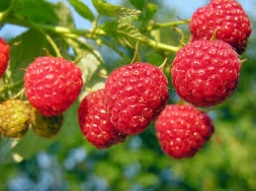Ratio
Alena collected 7.8 kg of blueberries, 2.6 kg of blackberries, and 3.9 kg of cranberries. Express the ratio in the smallest natural numbers in this order.
Final Answer:

Tips for related online calculators
Do you want to calculate the least common multiple of two or more numbers?
Need help calculating sum, simplifying, or multiplying fractions? Try our fraction calculator.
Check out our ratio calculator.
Need help calculating sum, simplifying, or multiplying fractions? Try our fraction calculator.
Check out our ratio calculator.
You need to know the following knowledge to solve this word math problem:
algebrabasic operations and conceptsnumbersUnits of physical quantitiesGrade of the word problem
Related math problems and questions:
- Blackberries
 Daniel, Jolana, and Stano collected 34 blackberries together. Daniel collected eight blackberries more than Jolana, and Jolana 4 more than Stano. Determine the number of blackberries each collected.
Daniel, Jolana, and Stano collected 34 blackberries together. Daniel collected eight blackberries more than Jolana, and Jolana 4 more than Stano. Determine the number of blackberries each collected. - Blueberries 79284
 Lenka, Jane, and Michael collected blueberries in the ratio of 3:4:2. Lenka collected 4.5 liters of blueberries. How many blueberries did Jane and Michael collect?
Lenka, Jane, and Michael collected blueberries in the ratio of 3:4:2. Lenka collected 4.5 liters of blueberries. How many blueberries did Jane and Michael collect? - Blackberries
 Damián gathered for 19 days 9.5 kg of blackberries. Milada gathered 1.6 kg of currants for two days. How much would collect Damián blackberries per day, and how many currants Miladka per day?
Damián gathered for 19 days 9.5 kg of blackberries. Milada gathered 1.6 kg of currants for two days. How much would collect Damián blackberries per day, and how many currants Miladka per day? - White and blue - Anna
 Anna used 8.1 pints of white and blue paint to paint her bedroom walls. Four-fifths of this amount is white paint, and the rest is blue paint. How many pints of blue paint did she use? Express your answer in fraction and decimal form. Solve on paper.
Anna used 8.1 pints of white and blue paint to paint her bedroom walls. Four-fifths of this amount is white paint, and the rest is blue paint. How many pints of blue paint did she use? Express your answer in fraction and decimal form. Solve on paper. - In a forest meadow
 The students planted 280 spruces and 60 pines on forest traps. Express the ratio of the number of planted pines to the number of planted spruces in the smallest possible natural numbers.
The students planted 280 spruces and 60 pines on forest traps. Express the ratio of the number of planted pines to the number of planted spruces in the smallest possible natural numbers. - Difference 68664
 The digits 1, 2, 4, and 8 form two four-digit numbers so that all 4 digits are used in the notation of each number. Calculate the difference between such largest even number and smallest odd number (in that order).
The digits 1, 2, 4, and 8 form two four-digit numbers so that all 4 digits are used in the notation of each number. Calculate the difference between such largest even number and smallest odd number (in that order). - Mushrooms 21653
 Martin went mushroom picking for three days. On the first day, he collected seven less than the third day, and on the second day, he collected eight more than the third day. Martin collected a total of 79 mushrooms. How much did he collect each day?
Martin went mushroom picking for three days. On the first day, he collected seven less than the third day, and on the second day, he collected eight more than the third day. Martin collected a total of 79 mushrooms. How much did he collect each day?
